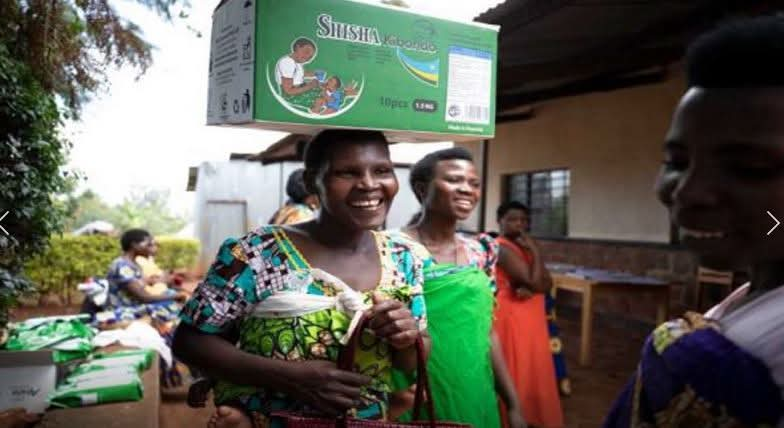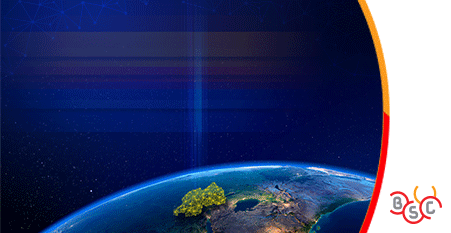
A mother is all smiles as after receiving the free-government granted package of food supplements, known locally as “Shisha Kibondo”. The program reaches up to 2 million children below 5-years, and their breastfeeding mothers. The packaged foods are high in nutrition, to boost growth of badies
In the East African Community (EAC), poverty remains a persistent challenge, despite the region’s cultural diversity and natural resources.
The 2024 EAC Multidimensional Poverty Index (MPI), published this week by the EAC Secretariat, reveals that having money does not equate to being free from poverty. Instead, poverty is multidimensional, encompassing deprivations in education, health, basic services, and living standards.
Beyond Monetary Measures: Understanding Multidimensional Poverty
Traditionally, poverty has been measured through monetary metrics like household income or consumption expenditure. However, these measures fail to capture the full spectrum of hardships faced by people.
The EAC MPI, developed using internationally accepted standards, evaluates deprivation across four key areas—education, health, basic services, and living standards—using twelve specific indicators such as school attendance, access to healthcare, clean cooking fuel, and housing quality.
This approach highlights an uncomfortable truth: even if someone earns enough to meet daily needs, they may still experience severe deprivation in other critical aspects of life. For example, a family might have sufficient income but lack access to safe drinking water, proper sanitation, or electricity, significantly impacting their well-being and opportunities for upward mobility.
Stark Realities Across the EAC Region
The 2024 EAC MPI baseline report offers sobering insights into multidimensional poverty across the eight-member states—Burundi, the Democratic Republic of Congo (DRC), Kenya, Rwanda, Somalia, South Sudan, Tanzania, and Uganda. Despite progress in reducing monetary poverty, multidimensional poverty remains alarmingly high, affecting approximately 60% of the EAC population.
Countries like Zanzibar (part of Tanzania) and Rwanda show relatively lower MPI scores, indicating better performance in addressing multidimensional poverty. In contrast, nations such as Somalia and the DRC exhibit staggering levels of deprivation, with MPI scores of 0.425 and 0.475, respectively. This disparity reflects deep-rooted structural challenges, including weak infrastructure, limited access to essential services, and ongoing conflicts.
One striking finding is the disproportionate burden of poverty borne by rural populations. Rural areas consistently record higher multidimensional poverty rates compared to urban centers. For instance, in Burundi, 62.8% of rural residents are multidimensionally poor, compared to just 34.4% in urban settings. This rural-urban divide underscores the urgent need for targeted interventions to bridge gaps in service delivery and improve living conditions in underserved communities.
Drivers of Multidimensional Poverty
The report identifies several key drivers of multidimensional poverty. Basic services emerge as the largest contributor to poverty in most countries, accounting for 29% to 36.6% of observed deprivation. Issues such as inadequate access to clean water, improved sanitation, and reliable energy sources severely constrain people’s ability to lead healthy, productive lives.
Health insurance coverage also stands out as a major issue. With average deprivation rates around 75%, millions of East Africans face financial risks when seeking medical care. Out-of-pocket expenses can push households into the “medical poverty trap,” forcing them to cut back on essentials like food and education to cover healthcare costs.
Cooking fuel presents another pervasive problem. Nearly 90% to 99% of households across the EAC rely on harmful fuels like wood, charcoal, or dung for cooking. This practice poses serious health risks, particularly for women and children exposed to indoor air pollution, and contributes to environmental degradation.
Education and housing further compound the challenges. Low school attendance and incomplete primary education limit future earning potential, while substandard housing exposes families to disease and insecurity. Together, these factors create a web of deprivation that is difficult to escape without comprehensive intervention.
A Call to Action: Moving Toward Sustainable Solutions
Addressing multidimensional poverty requires a holistic approach beyond economic growth. The EAC Vision 2050 adopted in 2016 by the bloc, sets ambitious targets, aiming for universal access to primary education, improved sanitation, safe water, and modern energy sources. Achieving these goals will demand accelerated action and innovative strategies.
Promoting clean energy solutions is one priority area. Transitioning to cleaner cooking fuels and lighting technologies would enhance public health and protect fragile ecosystems. Similarly, expanding national health insurance schemes could shield vulnerable populations from catastrophic medical expenses, fostering greater economic resilience.
Investments in basic services must also be prioritized. Ensuring equitable access to safe water, sanitation, and electricity is fundamental to improving quality of life and unlocking human potential. Infrastructure development should focus on connecting remote and marginalized communities, narrowing the rural-urban gap.
Data collection and analysis play a crucial role in guiding policy decisions. Strengthening national statistical systems will enable governments to monitor trends, identify gaps, and design evidence-based interventions. Regular updates to the EAC MPI will provide valuable benchmarks for tracking progress toward regional and international development goals.
Rwanda’s Efforts to Address Multidimensional Poverty
The index notes that despite some efforts, countries are still far from reaching the 2050 targets, particularly in areas like access to improved sanitation, safe water, and electricity. It recommends accelerating implementation of existing policies and action plans to address deprivations in these areas.
Rwanda, shows the index, has emerged as a model within the EAC for its proactive approach to tackling multidimensional poverty. The country’s MPI score of 0.209 reflects its relatively lower levels of multidimensional poverty compared to other EAC member states. This progress is attributed to targeted policies, institutional reforms, and community-driven initiatives aimed at reducing deprivations across education, health, basic services, and living standards.
Key strategies include:
- Vision 2050 and National Development Plans: Aligning long-term development strategy with the EAC’s regional goals, emphasizing inclusive growth, human capital development, and social protection systems.
- Universal Health Coverage (UHC): Expanding access to healthcare through the community-based health insurance scheme, Mutuelle de Santé, covering over 92% of the population.
- Education Reforms: Focusing on universal access to quality education, including free primary and secondary education, and initiatives like “One Laptop Per Child.”
- Access to Basic Services: Investing in improving access to clean water, sanitation, and electricity, aiming for universal electrification via renewable energy sources.
- Social Protection Programs: Implementing programs like the Vision 2020 Umurenge Program (VUP) to provide direct cash transfers, public works employment, and financial inclusion services to vulnerable households.
- Decentralization and Community Engagement: Enabling local governments to design context-specific interventions, ensuring community participation in decision-making.
- Clean Energy Transition: Promoting the adoption of clean cooking technologies and fuels to improve household health and environmental sustainability.
Rwanda stands out as a model within the EAC for its proactive approach to tackling multidimensional poverty. By aligning national strategies with the EAC Vision 2050 targets, the country has achieved notable successes in education, healthcare, and basic service delivery.
However, challenges remain. To sustain momentum, the report suggests that Rwanda must continue prioritizing inclusive growth, innovation, and cross-sector collaboration.
If current trends persist, Rwanda is well-positioned to meet or exceed the 2050 targets, serving as an inspiration for other EAC nations striving to eliminate multidimensional poverty.
True progress lies not in how much money people have in their pockets, but in the richness of their lived experiences and opportunities for a brighter future.

